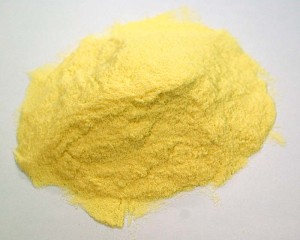Semolina flour and semolina The Differences. One of the questions from readers of my site more often comes to me is to clarify what are the differences between the semolina flour, the semolina flour, common wheat and durum wheat used in bread making and in the pizzeria.

Let's deal with this difficult subject, especially for those who are not insiders.
Semolina flour and semolina The Differences
Distinsioni between common wheat and durum wheat:
from processing (grinding) the wheat you get the classic white flour, labeled in different types:
- Wholemeal flour
- Flour 2
- Flour 1
- Flour 0
- Flour 00
categorized according to the degree of refining ( Flour 00 It is the most refined).
From the processing of durum wheat is obtained:
- Wholemeal flour
- semolina flour
- semolina flour

Semolina flour and semolina The Differences
The semolina flour It is slightly more yellow in color than that of wheat, It contains carotenoids, It is grainy to the touch and is similar to a fine sand.
So from the milling of durum wheat not get the flour 00 one that all we commonly use, which it is of pure white color and its texture is similar to a fine powder.
Durum wheat: as for the wheat, There are different varieties of durum wheat, one in all that seems to be the most in demand is called “Senatore Cappelli” that has a low value glutinico, therefore suitable for those with mild gluten intolerance problems, but beware: It is not free of gluten.
semolina It is less refined compared to the semolina, intense yellow color and it is the ideal flour to make homemade pasta. It retains many of its natural scents, It does not overcook and is much more digestible than the other types of flour.
With the semolina flour you can not produce any type of product leavened, I do not know if you have ever tried, but you would get poor results, does not rise at all, result: A brick unleavened. Some pizza maker uses the flour on the bench during the writing of the pizza so do not stick to the work surface, but personally I consider it an invalid cunning, because the semolina grains feel in your mouth when you eat the pizza.

The semolina It undergoes an extra step in the grinding phase becoming more subtle graininess. Even the color becomes lighter when compared to the semolina. The semolina is used in bakery and a pizzeria to produce characteristic bread and buns. Even the semolina is good to make homemade pasta, but it has a lower consistency, It takes less cooking and is more difficult to digest.
Semolina flour and semolina The Differences
If you are interested to know flour for pizza and bread, their strength (The) and the proteins contained, subscribe to our online professional course, many videos to watch on and along with many specific articles to read to learn comfortably sitting at home all the tricks to make pizza as a pizza maker professional. To know more CLICK HERE.

Can I use polenta flour instead of semolina flour to make a cake?
Personally I prepare my buns with flour 0, not with semolina. I tested a mixture of 80% type 0 and 20% corn flour, with excellent results. Like test new mixtures? Come, subscribe to one of our courses, we do it every day.